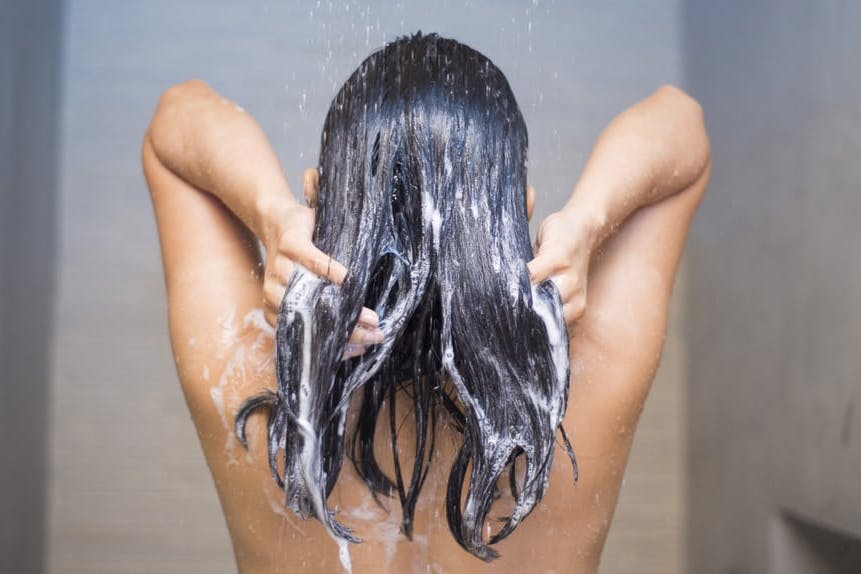You can commonly find formaldehyde-releasers in shampoos and cosmetics, despite decades of public concern. Is this concern backed by research, or is it just a myth? In this post, Nutrafol will review how to identify formaldehyde-releasers. We’ll explain why they’re used as shampoo ingredients – but also the potential risks.
What are Formaldehyde-releasers in shampoo?
Lifestyle
5 Min Read

Get hair, health, and science news delivered right to your inbox.
What are formaldehyde-releasers?
Formaldehyde-releasing preservatives, or more commonly referred to as formaldehyde-releasers, help to prevent microbial growth. What does this mean and why are they routinely added to cosmetics? Formaldehyde is added to prevent anything nasty from growing. There are over 40 formaldehyde-releasers, and countless branded derivatives, but the most common are:
- Quaternium-15
- DMDM Hydantoin
- Ureas (imidazolidinyl, or diazolidinyl)
- Benzylhemiformal
Unfortunately, you can’t just turn your shampoo bottle around and look at its ingredients to try identifying them – there’s no universal naming system. However, a formaldehyde-releaser will typically be one of the last ingredients on the label.
How do they work?
All formaldehyde-releasers work differently but there are two broad categories. Firstly, a formaldehyde-releaser can be synthesized directly from formaldehyde. The second mechanism is a chemical that decomposes to produce formaldehyde over time. The chemistry behind this can seem a little confusing and hard to understand, but the important thing you need to know is simply this: Formaldehyde is a strong antimicrobial which helps extend the shelf-life of shampoos.
Are there any risks using formaldehyde as a shampoo ingredient?
Formaldehyde is known to be carcinogenic and a strong irritant. The EU lists formaldehyde as a category 1B carcinogen. This means that it is a substance presumed to have carcinogen potentials for humans. But why is it not banned in shampoos you may ask? It is not banned in shampoos because it is used in extremely low concentrations and is not left on the skin. But as it is strongly irritant, people with sensitive skin should avoid products that has a label saying contains formaldehyde.
Alternatives to formaldehyde-releases
There is not many antimicrobial alternatives to formaldehyde-releasers. This is part of the reason why formaldehyde-releasers are still so prevalent and also a part of why the EU has continued to permit their use at low concentrations in cosmetics. Finding a natural solution to products containing formaldehyde isn’t easy. For example, everyday ingredients such as salt, sugar and honey can help preserve shampoos. From a manufacturer’s perspective, they’re not sufficient as they dramatically shorten the shelf life of the shampoos.
However, there are two natural solutions, one of them being the no-poo method. It’s known to be free from harmful chemicals and has been praised by stylists all over the world. The other solution is natural supplements. Nutrafol is a nutraceutical supplement with many natural ingredients that can strengthen and nourish thinning hair from within. Read about the supplement from people who use it before you decide if it’s worth to ditch your current shampoo or not.